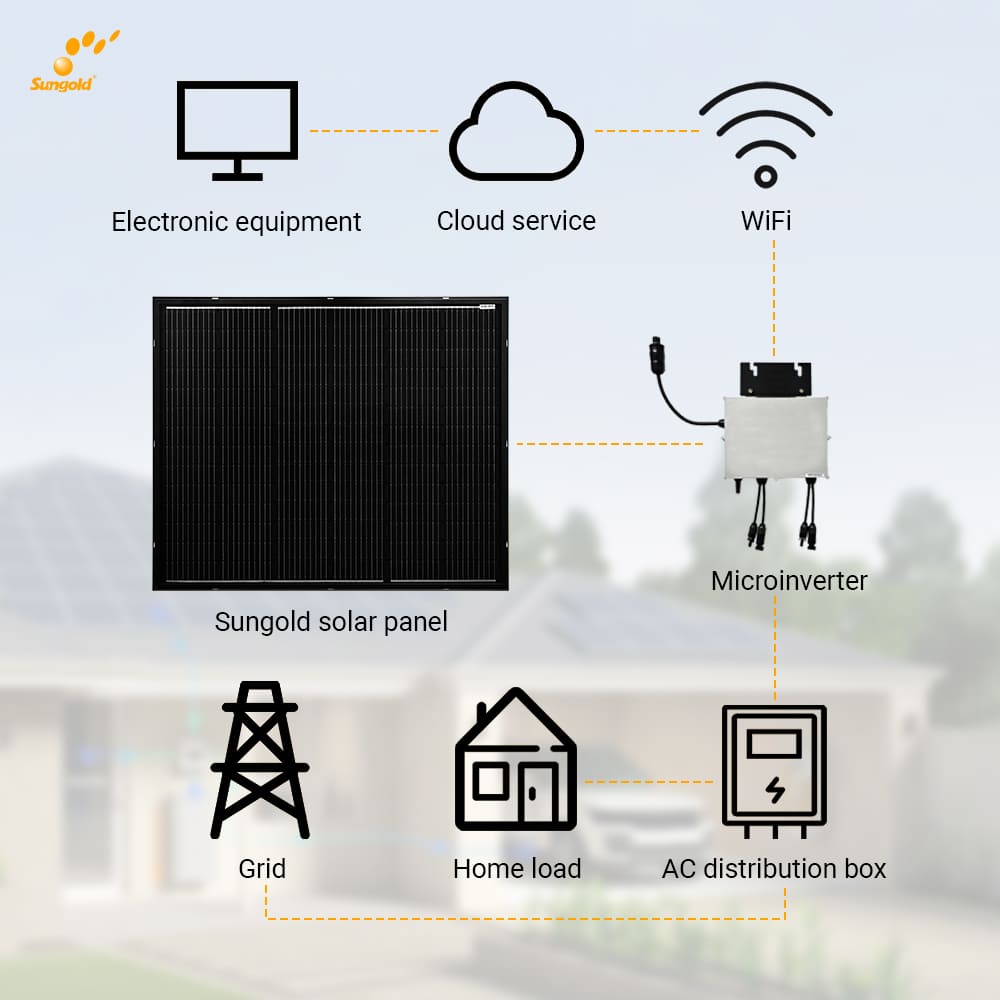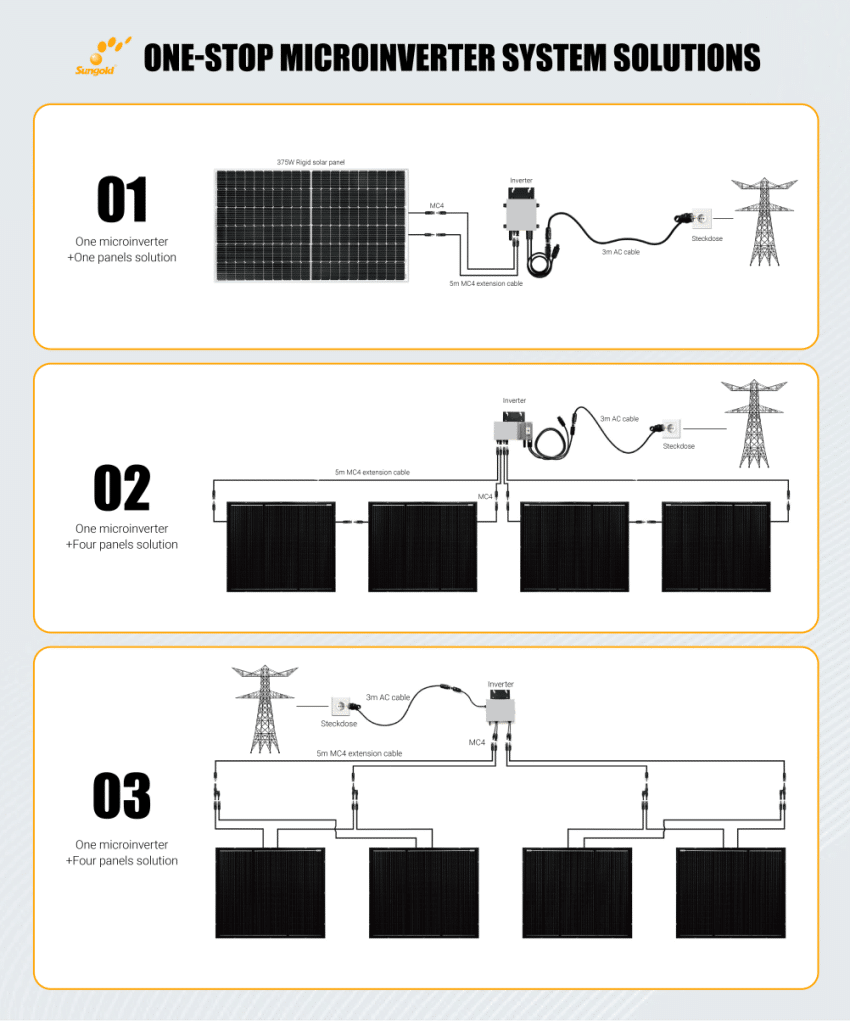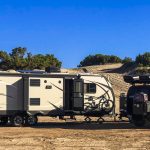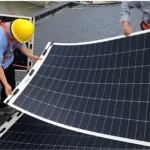You may know that our solar installation generally chooses to install solar energy on rooftops or garden environments with suitable sunlight and little shadow.
But what if you don’t have a garden or a roof to work with? Well, you don’t have to miss out on solar power just because you don’t live in a traditional home. If you live in an apartment and still want to have your own solar power, a balcony solar system is an ideal option.
What is a balcony solar system?
A balcony solar system, also known as a portable plug-in solar system, is a compact and efficient grid-tied solution that harnesses the sun’s energy to generate its own usable electricity. Solar balcony systems are becoming increasingly popular in Germany, Austria, and Spain as a sustainable solution for energy production. These systems typically consist of 2 to 4 solar panels mounted outside a balcony, providing homeowners and renters with an excellent way to generate electricity and reduce reliance on the grid.
One of the challenges with solar balcony systems is that they require reliable and efficient microinverters to convert the DC power generated by the solar panels into AC power that can be used in the home

Why you need a balcony solar system
First, balcony solar systems are very easy to install compared to some traditional solar panel systems, which often have many complex wiring paths to connect and require controllers, inverters, energy storage, etc. Some related facilities cannot directly convert current into alternating current and require the help of a third party, but the balcony system is different.
Balcony systems, also known as plug-in solar systems, simply plug into an outlet and connect directly to your home’s electrical circuit. Commonly known as Schuko plugs and sockets in Europe, these sockets open up a new world of possibilities for users.
Users simply plug their balcony solar system into a wall outlet to start generating electricity, eliminating the need for expensive professional panel design and evaluation and professional installers. This means that for those investing in plug-in solar equipment, complex installations are a thing of the past.
On top of that, balcony solar systems are also easy to unplug and take with you when you move – saving even more time and money on buying new panels every time you want to move.
Additionally, balcony solar panels do not require registration with an operator like traditional rooftop or ground-mounted systems. Normally, when you connect solar panels to the main grid, you need to report them to the operator. However, if your solar system is below the European ceiling standard of 800 W, you do not need to register it with the operator. German standards are slightly different, with an upper limit of 600 W. But that could all change soon, as the VDE (Verband der Elektrotechnik Elektronik Informationstechnik eV) drafted a proposal in January 2023 to raise the standard to 800 W. This will make it easier for German users to obtain solar energy through small power generation systems, rather than just traditional rooftop or ground-mounted solar systems.
How do you choose your balcony solar system?
As a balcony solar panel, you have to consider whether it meets household electricity needs: plug-in solar modules can only meet part of the energy needs of industrialized countries with high per capita electricity consumption. The average annual electricity consumption of a family of four in Germany is about 4,000 kWh, and the electricity consumption of one person is about 1,500 kWh. Still, advocates say generating electricity can help reduce electricity bills. In spring and summer, the average power generation of a 400-watt module facing south can reach 320 watts at the optimal tilt angle. When it is lightly cloudy, the power generation can be reduced by half, and when it is cloudy, the power generation is only about 50 watts. In the fall and winter, a plug-in solar system can produce 160 watts of power when the sun is shining and only 20 watts when it’s cloudy.
Therefore, even in the dark winter, there is enough power for an internet router, for example, which consumes about 10 watts. The balcony module will almost always provide enough power for a small refrigerator at 80 watts and a laptop at 40 to 100 watts.
So you can decide which system to choose to suit your needs based on the size of your balcony.
Generally, the current conventional home balcony systems are divided into three categories: 300w, 600w, and 800w balcony solar systems.Our general 300w balcony system consists of 375w or 400w solar modules + 300w micro-inverter;The 600W balcony system will consist of 4 200W lightweight balconies + 600W micro-inverter:The 800w balcony system will consist of 4x220w lightweight solar modules + 800w micro-inverter
How Sungold can help with your balcony solar system
At Sungold, we are committed to providing clean energy, which is why our range of solar panels is ideally suited to help you get the most out of your plug-in mini solar system. Solar panels can be used in a variety of scenarios including RV, marine, industrial, and commercial rooftops or residential. project,
For plug-in solar systems such as balcony solar, solar panels are easier and less expensive to install than traditional rooftop installations
Our TF series are the lightest flexible solar panels currently on the market, lightweight and high power output, and compliant with regulations, we usually design reasonable sizes and voltages with suitable microinverters and can install balcony systems up to 800
Usually, microinverters have two input channels and can connect up to two components. Each component can be independently controlled to ensure maximum power generation.
We designed the balcony solar modules to save energy, AC cables, and plugs, one end is connected to the micro-inverter, and the other end is plugged into a household socket, users can easily plug the microinverter into the socket without any socket
Of course, we have a variety of components for you to choose from, but we recommend that if your floor is relatively high, it is best to use lightweight components from a safety perspective. Currently, flexible solar panels or lightweight solar panels can have the same output power as conventional glass solar panels. , light and portable, does not affect your disassembly at any time.








